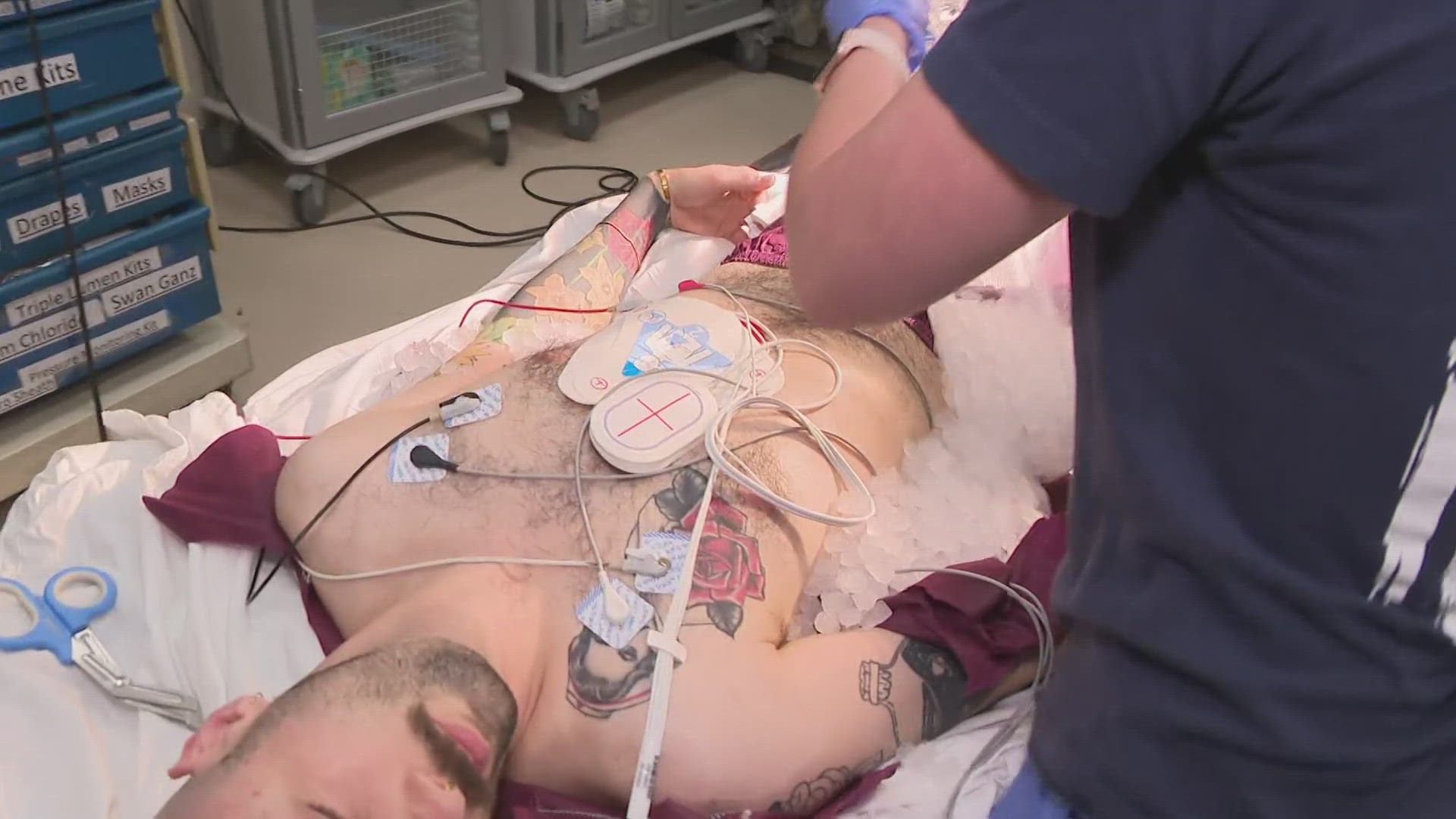PHOENIX — In the midst of the record-breaking heat wave Arizona is enduring, hospitals are treating patients who are coming in with heat-related illnesses.
Dr. Aneesh Narang, an emergency physician at Banner University Medical Center-Phoenix, said he’s seeing both heat exhaustion and heatstroke patients.
“We’re seeing many, many of them every day,” Narang said.
Over the past couple of years, Narang said there have been more patients coming in with heat-related illnesses. While the patient count has gone up, the goal is really to cool patients down.
“If you can cool them down in less than 30 minutes from the start of the heatstroke, they have a great chance of recovery, a great chance of walking away neurologically intact, returned back to their life,” Narang said.
Inside the emergency department sits a cart with a blue sign reading "Hyperthermia Cart," carrying essentials providers will need to treat people when they come in with severe heat-related illnesses.
One of the tools the team is turning to more with heatstroke patients is immersive ice therapy.
Patients are placed on a cooling blanket placed inside a large bag.
“Once we get the patient on here we are connecting to the monitor, we're putting pads on them, we're beginning to put a probe to monitor temperature,” Narang said. “And then immediately, we're putting ice and some water to almost create a sort of slurry to really maximize our abilities to cool these patients down.”
The entire time that’s being done, Narang said the team is still resuscitating patients, giving them fluids and helping patients breathe.
“Within 10 to 15 minutes if we do this process right we can get them to a temperature that's now, ‘Okay, this is manageable’,” Narang said.
Once the patient has cooled down some, they’re removed from the ice so as not to cool them down too much to cause hypothermia.
If patients are not as severe, the providers can reach for other options to help cool them down – like using evaporative cooling to mimic sweating.
“We spray lukewarm water on the patient’s body after we undress them and we put this fan on the patient and they’re evaporating and they’re cooling,” Narang said.
Still, Narang said he’s expecting more people to come through the emergency department this summer knowing that the summer heat isn’t over.
“Do not take chances,” Narang said. “Even if you think you're healthy, you're still susceptible to heat-related illnesses. There are some patients unfortunately in our community who are homeless who don't have access to taking care of themselves quickly, and is still a concern and always will be.”
>> Download the 12News app for the latest local breaking news straight to your phone.
12News on YouTube
Catch up on the latest news and stories on the 12News YouTube channel. Subscribe today.

